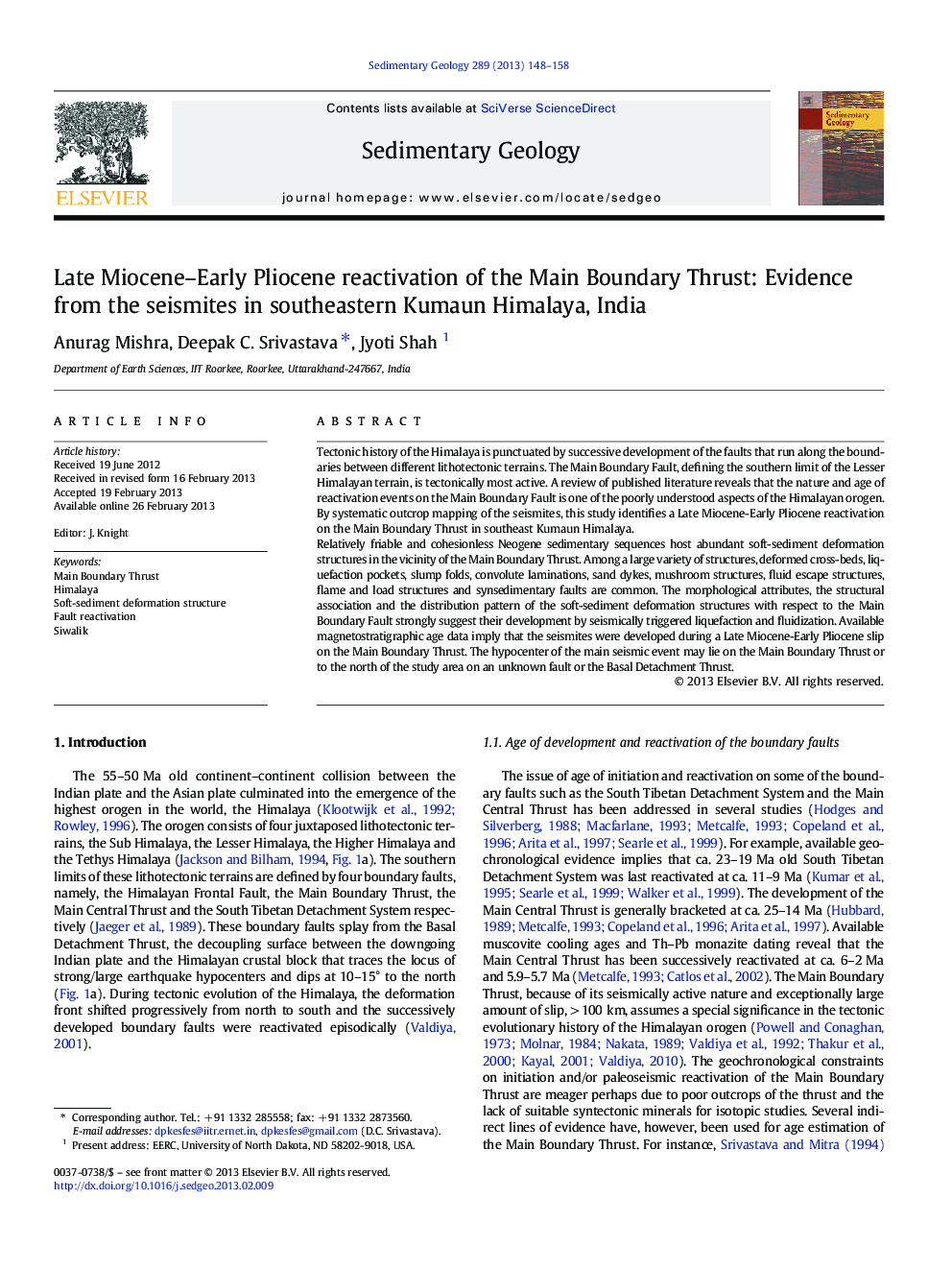| کد مقاله | کد نشریه | سال انتشار | مقاله انگلیسی | نسخه تمام متن |
|---|---|---|---|---|
| 4689590 | 1636074 | 2013 | 11 صفحه PDF | دانلود رایگان |
عنوان انگلیسی مقاله ISI
Late Miocene-Early Pliocene reactivation of the Main Boundary Thrust: Evidence from the seismites in southeastern Kumaun Himalaya, India
ترجمه فارسی عنوان
تأخیر مجدد پیلوسیس اولیه در محدوده مرز اصلی: شواهدی از ساحلی در جنوب شرقی کومون هیمالیا، هند
دانلود مقاله + سفارش ترجمه
دانلود مقاله ISI انگلیسی
رایگان برای ایرانیان
کلمات کلیدی
محور اصلی محاصره، هیمالیا، ساختار تغییر شکل رسوب نرم دوباره فعال شدن گسل، سیوالیک،
موضوعات مرتبط
مهندسی و علوم پایه
علوم زمین و سیارات
فرآیندهای سطح زمین
چکیده انگلیسی
Relatively friable and cohesionless Neogene sedimentary sequences host abundant soft-sediment deformation structures in the vicinity of the Main Boundary Thrust. Among a large variety of structures, deformed cross-beds, liquefaction pockets, slump folds, convolute laminations, sand dykes, mushroom structures, fluid escape structures, flame and load structures and synsedimentary faults are common. The morphological attributes, the structural association and the distribution pattern of the soft-sediment deformation structures with respect to the Main Boundary Fault strongly suggest their development by seismically triggered liquefaction and fluidization. Available magnetostratigraphic age data imply that the seismites were developed during a Late Miocene-Early Pliocene slip on the Main Boundary Thrust. The hypocenter of the main seismic event may lie on the Main Boundary Thrust or to the north of the study area on an unknown fault or the Basal Detachment Thrust.
ناشر
Database: Elsevier - ScienceDirect (ساینس دایرکت)
Journal: Sedimentary Geology - Volume 289, 1 May 2013, Pages 148-158
Journal: Sedimentary Geology - Volume 289, 1 May 2013, Pages 148-158
نویسندگان
Anurag Mishra, Deepak C. Srivastava, Jyoti Shah,
